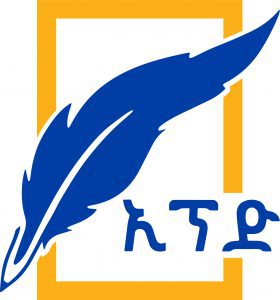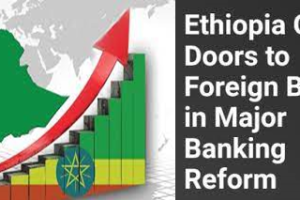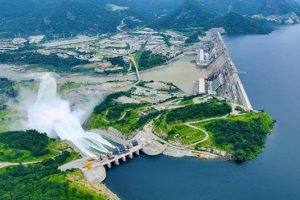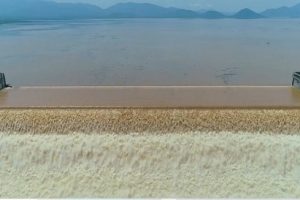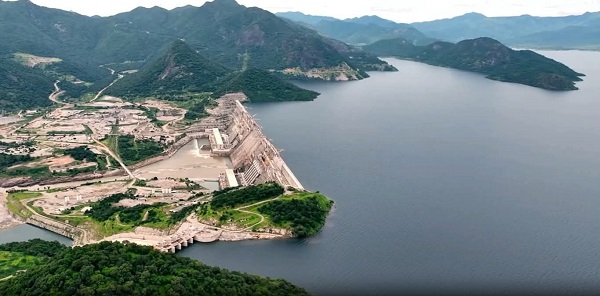
Back in 2011, news of the launch of the Grand Ethiopian Renaissance Dam (GERD) had caught the nation by surprise. No one expected it to come, although it was on an economic growth trajectory in the preceding years. It was the economic growth that had inspired the government of the time to expand the power base of the economy for the coming years. Few people believed that Ethiopia could build such a huge hydroelectric dam in such a short time.
The dame was expected to be commissioned after five years by 2015. However, things took an unexpected turn, and what was planned to take five years has taken double the expected time frame.
The events following the launching of this massive dam could not be predicted as the nation was caught once again in a sudden process of political reforms. The dam was a national talking point, and it suddenly shifted to the background.
The construction of the dam was a unifying factor. At no time in their history had the Ethiopian people come together to work for a common objective. The political reforms were thus an unprecedented political opportunity, a threat, and the outcome of the GERD project largely depended on the outcome of the political reforms. The future of the nation hangs in the balance both concerning the construction of the dam. Following the war in the north of the country against the TPLF, the entire process came to a near halt as the war turned national attention away from the dam into the devastating conflict.
The conflict between the Ethiopian government and the TPLF or the Tigray interim administration had threatened not only the construction of the GERD but also the economies in general, as all efforts were geared towards settling the war first to be able to turn the national attention back to the dam.
The national cohesion that emerged during the launch of the GERD had a positive effect on the war as it helped the government mobilize the people of Ethiopia against the treacherous TPLF-led government in the north of the country that was allegedly indulging in what was perceived as an act of national treason. As such, the victory of the forces of unity paved the way or created a fresh opportunity to turn national attention back to the GERD again.
The GERD was not, of course, the first modern hydroelectric dam project. There were smaller projects that were built a long time ago when the electricity demand was smaller, and the population of the country and the economy had never seen spectacular growth. According to some sources, “Ethiopia has the world’s largest hydropower potential, trailing only the Democratic Republic of Congo, with a huge annual theoretical energy potential.
The country has approximately 11 large hydropower dams with one of the largest annual energy production capacities in Africa. Currently, the Ethiopian Electric Power company is managing 22 hydropower stations” Ethiopia has many dams and reservoirs, namely Koka, built in 1960 on the Awash River, Fincha built in 1973 on the Blue Nile Gilgel Gibe I dam built in 2004 on the Gilgel Gibe River and Tekeze dam built in 2009 on the Tekeze river.
What makes the GERD a flagship project is not only its size or its capacity but the fact that it is built with the active participation of the entire Ethiopian people from the beginning of the project to its successful completion.
The GERD is indeed the largest hydropower project in Africa and among the 20 largest in the world. As the launching of the project was to sources was announced the dream of the entire nation, so is its completion, which, according to sources, was announced to parliament by Prime Minister Abiy Ahmed back in October 2024. The fourth and final filling of the dam’s reservoir was completed in September 2023. The dam’s reservoir has a total capacity of 74 billion cubic meters and is expected to generate more than 6,450 megawatts of electricity.
The GERD has been a center of controversy since its very inception and it required huge diplomatic efforts to create consensus around it. The dam has also been a source of regional tension among riparian states, particularly with Egypt and Sudan. The final negotiations took place in Cairo after almost two and a half years of negotiations. The negotiations were conducted by taking into account the water needs of the three countries.
According to other sources, Egypt was particularly worried because it saw any infrastructure development on the Nile as a potential threat since the river is the source of over 98% of the country’s water. Egypt called this a violation of international law and Ethiopia’s obligation to prevent significant harm. According to a study by the Brookings Institution in the United States, the dispute over the Nile River water has a long history of conflict and shifts in power dynamics.
“Although conflict over the allocation of the waters of the Nile River has existed for many years, the dispute, especially that between Egypt and Ethiopia, significantly escalated when the latter commenced construction of the dam on the Blue Nile in 2011. Ethiopia, whose highlands supply more than 85 percent of the water that flows into the Nile River, has long argued that it has the right to utilize its natural resources to address widespread poverty and improve the living standards of its people.
“Over the years, Egypt has used its extensive diplomatic connections and the colonial-era 1929 and 1959 agreements to successfully prevent the construction of any major infrastructure projects on the tributaries of the Nile. As a consequence, Ethiopia has not been able to make significant use of the waters of the river.
However, as a result of the ability and willingness of Ethiopians at home and abroad to invest in the dam project, the government was able to raise a significant portion of the money needed to start the construction of the GERD. Chinese banks provided financing for the purchase of the turbines and electrical equipment for the hydroelectric plants.”
The GERD is huge also from the point of view of the cost of its construction. “The estimated cost of construction of the dam is around 4 billion USD. And as of early 2024, the GERD’s construction is a significant milestone. The completion of the construction of the dam signals a new era for Ethiopia’s infrastructure and energy sectors. As indicated above, the GERD is the 10th largest hydropower dam in the world in terms of installed capacity.
The biggest hydropower dams in the world are the Three Gorges Dam with a total power production capacity of 22,5 GW, followed by the Baihetan Dam (also in China) and the Itaipu Dam shared by Brazil and Paraguay. The three largest hydropower dams in Africa by installed capacity are the GERD in Ethiopia more than 6,450 MW followed by the Aswan High Dam in Egypt (2,100 MW), and the Cabora Bassa Dam in Mozambique with 2.070 MW. Gilgel Gibe dam, also in Ethiopia, is the fourth largest dam.
The benefits of the GERD to the Ethiopian economy may not be immediately visible or tangible but its long-term impacts are expected to radically change the profile of Ethiopia’s power production and provide a strong and dependable power base for the expansion of industrial and agricultural sectors through irrigation farming that will go a long way in meeting the long-term food needs of its fast-growing population.
Already, it has started to supply power to neighboring Djibouti. The GERD is boosting the regional power connectivity and production capacity by connecting power to the various grids around the region. It is also expected that Kenya will benefit from GERD’s power supply. This will also lay the basis for a more dynamic regional economic cooperation of not the integration of regional economies.
The GERD will undoubtedly have significant impacts on the lives of millions of Ethiopians as well as the peoples of the region, by creating a peaceful framework for growing economic cooperation that will prove to be a strong foundation for durable peace in the region. GERD will not eventually be the biggest dam in Ethiopia or in the region at large.
Ethiopia is now awakening to its vast hydropower potential. As the economy as well as population grows, demand for power will grow, and the need for the construction of another hydropower station will increasingly be felt.
However, the experience, skills, and knowledge gained from the GERD will inevitably facilitate the expansion of similar power stations in the future. The Ethiopian people have been dreaming about GERD, and they have realized their dream. From now onwards they will have the right and opportunity to dream big and achieve big. This will surely be the mark of a nation on the rise. Ethiopia will surely be the beacon of hope for hundreds of millions of Africans near and far.
BY MULUGETA GUDETA
THE ETHIOPIAN HERALD WEDNESDAY 2 APRIL 2025
